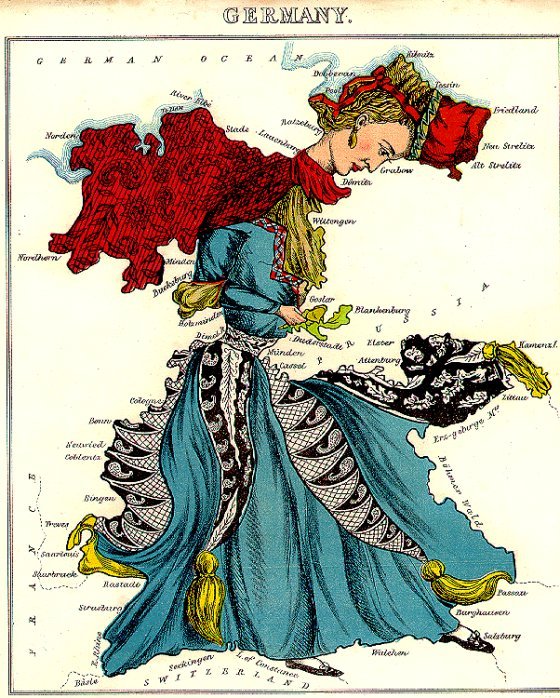Strangest Maps Ever Created – You Have Never Seen Our World Like This!
Conny Waters - AncientPages.com - In ancient times, people saw the world in a very different way. This collection of maps must be one of the strangest representations of world depictions ever created.
Some of these maps are fantasy. As you can see, the shapes of the countries and continents are odd representations of figures or animals. Other maps depict what our ancestors believed to be Biblical Lands.
“Legends of strange human beings have a long history, as do their depictions on maps. Many of these representations were derived from the descriptions given in the Natural History of the World by the elder Pliny (AD 23-79) and first printed in Latin in 1469. Pliny’s ideas were absorbed by most geographers of the 16th century and were particularly well illustrated in the successive editions of Ptolemy’s maps published by Sebastian Munster from 1540 onwards.
On the Ptolemaic map of Asia, a number of strange beings are placed in Scythia or part of Northern Asia.
At the top of the map, Munster shows the Anthropophagi, who feed on men’s flesh and live near the North Pole.
In the margins he depicts those humans described by Pliny in Book 7:
“In India there is a kind of men with heads like dogs…who in lieu of speech use to bark.
Likewise there is a kind of people named monoscelli that have but one leg apiece.
In the hottest season of Summer, they lie along their backs and defend themselves with their foot against the Sunnes heat.”
Then of course we have the legendary Garden of Eden. For over 1500 years the existence of the Garden of Eden was an unquestionable fact for most Christian believers. Its location varied, but in the early Middle Ages, it was generally thought to be at the eastern extremity of the world, while later it was placed in the area of Mesopotamia.
Islandia. From the Theatrum Orbis Terrarum of Abraham Ortelius. Antwerp, c. 1585. Credit: Yale University
Early mapmakers often recorded on their maps and charts the presence of fabulous beasts, many of which reveal themselves as identifiable species made grotesque by the embroidered tales of sailors and travelers. Of the many maps depicting sea monsters, the Carta Marina by Olaus Magnus was the most influential. First printed in 1539, it showed the area of the North Sea filled with dangerous maritime creatures. Versions of Olaus Magnus’s monsters populated the seas on charts until the mid-18th century.
Ortelius copied many of these monsters for his map of Iceland, published in editions of his Theatrum Orbis Terrarum. Iceland is shown at a large scale, with its fjords, glaciers, and mountains, including an erupting volcano, Mt. Hekla. Polar bears on icebergs can be seen at the top right, while the ocean contains probably the most fantastic collection of sea monsters to be seen on one engraving.
Asia Secunda Pars Terrae in Forma Pegasir. Die Gantze Welt in ein Kleberblat. Heinrich Bunting, c. 1590. Credit: Yale University
Among the earliest cartographic oddities are the famous maps from Heinrick Bunting’s Itinerarium Sacra Scripturae, or Travels According to the Scriptures, first published in 1581. A description of Biblical lands, it was a popular book that was reprinted many times. In addition to correct maps of the Holy Land, it also contained three maps of pure fantasy: the world in the form of a clover leaf, Europe as a robed female figure, and Asia as Pegasus the mythical winged horse.
Credit: Yale University
The horse is drawn fairly realistically so that the shape of Asia has to be adjusted; the Caspian Sea lies horizontally between the wings and the saddle, and modern India is the off hind leg. The Pegasus map can be found in a number of different editions in both woodcut (as displayed here) and more rare copperplate versions.
In Bunting’s map of the world as a clover leaf, representing the Trinity, each of the three continents of the Old World forms a section, with Jerusalem in a circle in the center. England and Scandinavia appear separately at the northern edge of the map, and the new continent of America can be seen in the lower left corner.
Credit: Yale University
It has been suggested that the cloverleaf design represents not only the Trinity but the arms of Bunting’s native city of Hanover.
These maps are from Geographical Fun, or Humorous Outlines of Various Countries, published by Hodder and Stoughton in 1869. The author, William Harvey writing under the pseudonym Aleph, created a series of twelve maps showing various countries as curious people in the great tradition of English caricaturists. The idea behind the maps was taken from sketches drawn by a fifteen-year-old girl wishing to amuse her sick brother confined to bed.
Harvey states in the introduction: “It is believed that illustrations of Geography may be rendered educational, and proof of service to young scholars who commonly think Globes and Maps but wearisome aids to knowledge.” The maps and rhymes were thus designed to amuse children and to teach some basic geographical concepts, rather than as political satires.
These maps are part of the Yale University Map Collection.
Written by Conny Waters - AncientPages.com Staff Writer
More From Ancient Pages
-
 Mystery Of The Sphinx – A Guardian Of Knowledge And Symbol Of Riddles And Intrigue
Ancient Symbols | Oct 13, 2015
Mystery Of The Sphinx – A Guardian Of Knowledge And Symbol Of Riddles And Intrigue
Ancient Symbols | Oct 13, 2015 -
 Scientists Question Whether Meat Eating Really Changed Human Evolution
Archaeology | Jan 25, 2022
Scientists Question Whether Meat Eating Really Changed Human Evolution
Archaeology | Jan 25, 2022 -
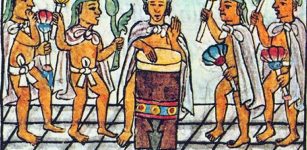 Daily Life Of Télpochcalli Students Of The Aztec Empire Was A Challenge
Ancient History Facts | Apr 20, 2020
Daily Life Of Télpochcalli Students Of The Aztec Empire Was A Challenge
Ancient History Facts | Apr 20, 2020 -
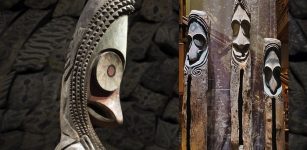 Curious Alien-Looking Slit Gongs Figures From Vanuatu Allowed Villagers To Communicate
Ancient Traditions And Customs | Sep 24, 2018
Curious Alien-Looking Slit Gongs Figures From Vanuatu Allowed Villagers To Communicate
Ancient Traditions And Customs | Sep 24, 2018 -
 Mystery Of The Yaghan People: The First True Discoverers Of America?
Civilizations | Sep 19, 2016
Mystery Of The Yaghan People: The First True Discoverers Of America?
Civilizations | Sep 19, 2016 -
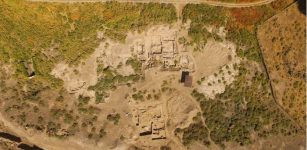 3,000-Year-Old Bakery With Large Amounts Of Flour Discovered In Armenia
Archaeology | Jul 3, 2023
3,000-Year-Old Bakery With Large Amounts Of Flour Discovered In Armenia
Archaeology | Jul 3, 2023 -
 Gold Treasures Of Ancient King Discovered In North America Create Historical Problems
Civilizations | Jun 29, 2018
Gold Treasures Of Ancient King Discovered In North America Create Historical Problems
Civilizations | Jun 29, 2018 -
 Ancient Mystery Of The Menorah – Enigmatic Sacred Object With Complex History
Featured Stories | Nov 5, 2018
Ancient Mystery Of The Menorah – Enigmatic Sacred Object With Complex History
Featured Stories | Nov 5, 2018 -
 DNA Analysis Shows Griffin Warrior Ruled His Greek Homeland
Archaeology | Aug 26, 2022
DNA Analysis Shows Griffin Warrior Ruled His Greek Homeland
Archaeology | Aug 26, 2022 -
 Enigmatic Green Lady In British Folklore
Featured Stories | Jan 9, 2017
Enigmatic Green Lady In British Folklore
Featured Stories | Jan 9, 2017 -
 Huge Unknown Ancient Lost World Discovered Inside Giant Sinkhole In China
News | May 19, 2022
Huge Unknown Ancient Lost World Discovered Inside Giant Sinkhole In China
News | May 19, 2022 -
 Did Ancient Oshoro Stone Circle Serve As A Portal To The Spirit World?
Featured Stories | Aug 19, 2017
Did Ancient Oshoro Stone Circle Serve As A Portal To The Spirit World?
Featured Stories | Aug 19, 2017 -
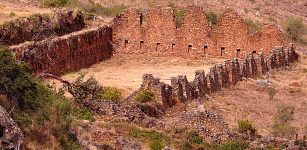 Inca Llajta: Largest And Most Impressive Inca Complex In Bolivia
Civilizations | Dec 6, 2018
Inca Llajta: Largest And Most Impressive Inca Complex In Bolivia
Civilizations | Dec 6, 2018 -
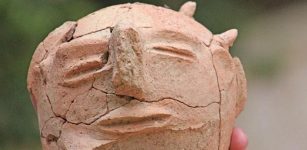 A Head Of A Statue Dated To 700 BC, Animal Figurines And Jordan Valley’s Occupation History
Archaeology | Sep 1, 2018
A Head Of A Statue Dated To 700 BC, Animal Figurines And Jordan Valley’s Occupation History
Archaeology | Sep 1, 2018 -
 Where Is The Grave Of Queen Boudica?
Ancient History Facts | Aug 15, 2017
Where Is The Grave Of Queen Boudica?
Ancient History Facts | Aug 15, 2017 -
 400-Year-Old Shipwreck Found Off The Coast Of Portugal Labeled ‘Discovery Of A Decade’
Archaeology | Sep 26, 2018
400-Year-Old Shipwreck Found Off The Coast Of Portugal Labeled ‘Discovery Of A Decade’
Archaeology | Sep 26, 2018 -
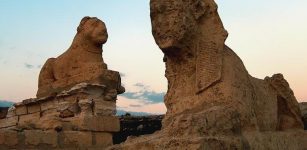 Thriving Faiyum Oasis Declined And Was Abandoned Due To Climate Change
Archaeology | Jan 26, 2021
Thriving Faiyum Oasis Declined And Was Abandoned Due To Climate Change
Archaeology | Jan 26, 2021 -
 Carian Princess’ Tomb, Golden Artifacts – Now On Display In Renovated Hall Of Bodrum Castle
Artifacts | Aug 27, 2020
Carian Princess’ Tomb, Golden Artifacts – Now On Display In Renovated Hall Of Bodrum Castle
Artifacts | Aug 27, 2020 -
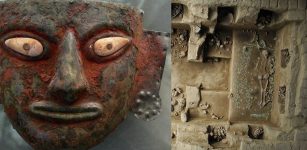 Ancient Tomb Of Peru’s Moche Priestesses Unearthed
Archaeology | Jul 23, 2016
Ancient Tomb Of Peru’s Moche Priestesses Unearthed
Archaeology | Jul 23, 2016 -
 On This Day In History: Cyrus The Great And His Army Took Babylon – On Oct 12, 539 BC
News | Oct 12, 2016
On This Day In History: Cyrus The Great And His Army Took Babylon – On Oct 12, 539 BC
News | Oct 12, 2016




